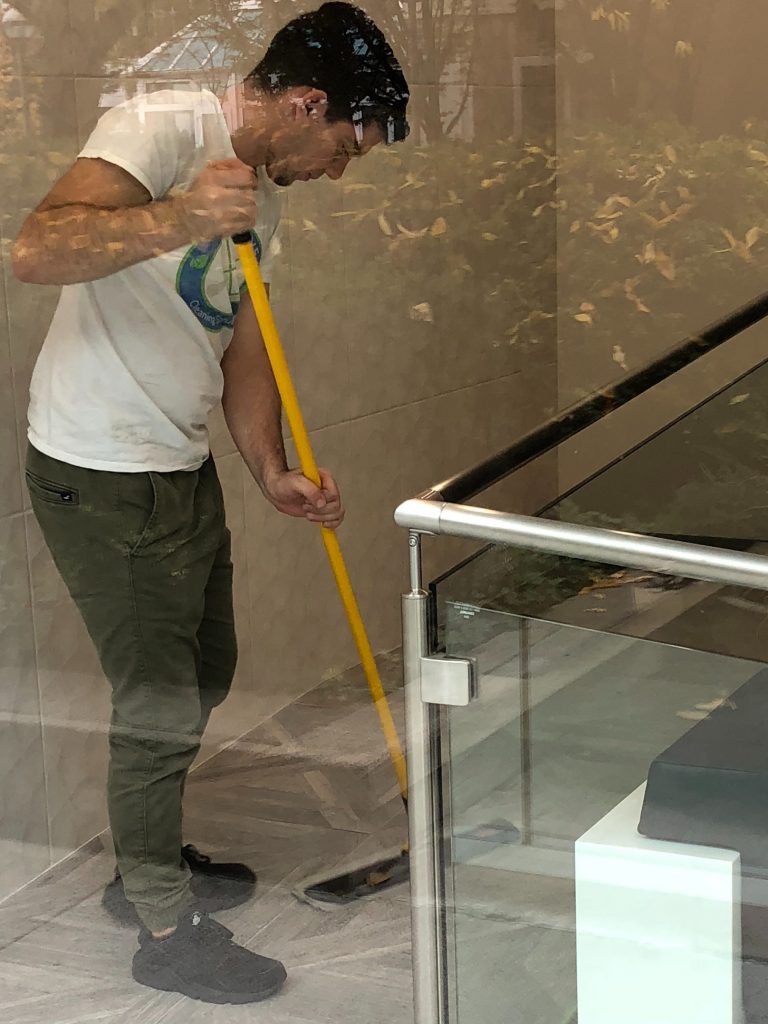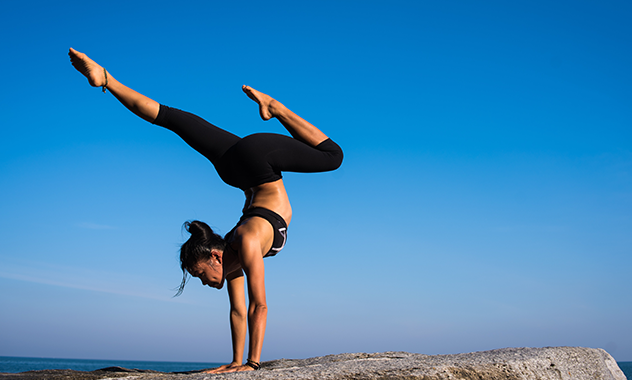
With the development of the Covid-19 pandemic and the increased risk of transmitting harmful viruses and bacteria, it has never been more important to ensure that workplaces and public settings are kept clean and sanitary. This is even more vital in a healthcare setting where many will be receiving treatment that makes them even more vulnerable.

According to the Centre for Disease Control and Prevention, it is best practice to clean a healthcare setting before using disinfectant or sterilization products. This is to ensure that any foreign materials such as organic material and soil are removed. To complete the initial clean, use water with detergent to wipe down all surfaces. It is important to do this and remove the foreign material, as if this step was skipped, the material could interfere with the effectiveness of the disinfectant process. When cleaning surfaces manually, it is important to apply friction to the surface and use appropriate fluids to remove the debris. Surgical instruments or tools should also be cleaned before disinfecting by soaking or rinsing them to remove bodily fluids in a medical setting. With these tools, it is important to ensure that they are fully cleaned; therefore, instruments with hinges should be fully open.
Cleaning can also be undertaken with automatic or mechanical cleaners. One of the most common types of automatic cleaner is an ultrasonic cleaner, that can remove debris from tools by cavitation and implosion from the waves of acoustic energy through a solution to break down the bonds that connect the debris to the surface of the tools. It is important to note that some cleaning fluids often used with ultrasonic cleaners can result in endotoxin contamination, which can lead to inflammatory reactions in patients, so it is best to avoid this. Instead, consider using a neutral or near-neutral PH detergent solution as this is more compatible. Enzymes such as proteases can be added to these solutions, as these can help remove organic material by attacking the proteins in them.
After any cleaning or disinfectant solutions are used, the equipment or tools should be rinsed to reduce any residual chemicals or products on them.
One concerning statistic is that only 34% of surfaces near patients are cleaned in accordance with the standards and policies recommended by healthcare experts. This can lead to an increased risk of infection or transmission of bacteria and virus, leading to patient illness. In order to improve these, it is important to add a monitoring process into your cleaning routine as this can improve the levels of cleaning, doubling the effectiveness. In order to ensure that effective cleaning has taken place, a reprocessing verification test can be employed. Although the CDC does not routinely recommend this, it does ensure that the cleaning process is working.
After all surfaces and tools are appropriately cleaned, the disinfection process can then take place. Disinfection helps reduce the number of micro-organisms on a surface to reduce the risk of transmission to patients. It is recommended that hard surfaces should be disinfected with 1000ppm (0.1%) chlorine releasing agent/hypochlorite solution or chlorine dioxide solution. This solution should be diluted according to the manufacturer’s exact instructions to ensure that the solution will work to its maximum capacity.

Hypochlorite solutions can be corrosive, so they should be rinsed off stainless steel surfaces after the process, while chlorine solutions do not require this final step.
There are three main types of cleaning in a healthcare setting: routine, enhanced, and terminal. Routine cleaning should be completed at least once a day and cover all general surfaces and tools with a detergent and then a disinfectant solution.
On the other hand, enhanced cleaning should be utilized if there if an outbreak or increase in infection levels, for example, during the Covid-19 pandemic. The rate of cleaning should increase to at least twice per day, and it should include all surfaces usually disinfected in a general clean, plus high-touch points such as rails, the arms of chairs, door handles, and push plates.
Terminal cleaning is at the top of the scale; this is where a whole facility or department is cleaned due to an outbreak of infection in close proximity to the area, after the discharge or death of a patient with a known infection or isolation of a patient with a potential infection. At this stage, some facilities may wish to add in additional measures such as vaporized hydrogen peroxide or steam to decontaminate the air as well as surfaces. At this point, all cleaners should wear PPE equipment to protect themselves. This should be discarded after one use and disposed of as clinical waste. Any windows should be opened to aid ventilation, and disposable cloths and mop heads should be used so that they can also be disposed of as clinical waste.

Here at Innovative Cleaning Solutions, we provide top quality cleaning services for many different healthcare facilities. We work in collaboration with our clients, creating a Cleaning Maintenance Plan based on the individual facilities needs. We use our decade of combined experience to ensure that we follow international health standards and specialize in the ‘Cleaning for Health’ methodology. We ensure that our products are both environmentally friendly, non-toxic, and offer high levels of disinfectant. We use a three-step check after our cleaning to ensure that it meets the high standards necessary in a healthcare setting.
First, we use UVA inspection tools to locate any missed areas. Second, we utilize Adenosine triphosphate (ATP) to help identify any bacteria left in the area and measure its level of harm. Third, we then resolve these issues, breaking down any bacteria or micro-organisms, ensuring a sanitized environment. If you are looking to keep your healthcare setting clean, safe, and sanitized, contact us today for a free, no obligation quote.
Even though the importance of disinfection is widely known and enforced in the healthcare industry, Canadians are still at risk of getting sick from improper infection control and unsanitary surfaces. In April 2018, over 4,600 patients from a Canadian healthcare centre were sent letters advising them to get tested for HIV, Hepatitis B, and Hepatitis C due to improper infection control and prevention (SOURCE: Ottawa Public Health). The reduction of surface contamination through cleaning and disinfection is crucial for health and wellness centres trying to minimize the risk of causing an outbreak. Cleaning and disinfecting high-touch surfaces are commonly considered the first defences against the threat of harmful microbes. In order to protect staff, customers, and clients, health and wellness centres need to hire knowledgeable cleaning professionals that understand the importance of sanitization and infection prevention. A properly cleaned wellness centre is not only one of the best ways to prevent infections, but it is also extremely good for business. In an industry that is based on health and wellness, protecting people’s health through cleaning is not only necessary, but imperative.
Cleaning and disinfecting high-touch surfaces are commonly considered the first defences against the threat of harmful microbes. In order to protect staff, customers, and clients, health and wellness centres need to hire knowledgeable cleaning professionals that understand the importance of sanitization and infection prevention. A properly cleaned wellness centre is not only one of the best ways to prevent infections, but it is also extremely good for business. In an industry that is based on health and wellness, protecting people’s health through cleaning is not only necessary, but imperative.
When contaminated areas are not cleaned correctly, common illnesses like influenza and C. difficile will remain on surfaces for extended periods of time, creating the potential for people to develop these illnesses (SOURCE: S.H. Dalwadi, J.H. Simmonds). Even though sanitation can kill influenza on surfaces, it is still estimated to hospitalize 12,200 Canadians annually, and an expected 3,500 of these people die (SOURCE: Canada.ca). The cleaning of high-touch areas would most likely play a large role in diminishing the amount Canadians affected by the influenza virus, and this same ideology can be applied to other illnesses that survive on surfaces for extended durations of time.
There are many high-touch surface areas that require frequent disinfecting in most health and wellness centres, such as (SOURCE: CMM Cleaning & Maintenance Management):
High-touch surfaces like those listed above can contain many different harmful microbes. If disinfection and cleaning of these critical areas does not occur, the following harmful microbes and pathogenic bacteria can be found on the contaminated surfaces (SOURCE: Curtis J. Donskey MD, S.H. Dalwadi, J.H. Simmonds):
With proper hygiene management, C. difficile was found to be reduced on surfaces by 48 percent (SOURCE: Michael Philips, MD). Although there are guidelines and policies in place for how healthcare-related environments should be cleaned and disinfected in Canada, there are no national standards to measure how clean things are (SOURCE: Canada.ca). Levels of cleanliness in Canada are assessed on how clean things appear to be visually, which causes many businesses to ineffectively clean and sanitize their facilities. A proper way to identify harmful microbes is needed in order to properly clean, sanitize, and disinfect health and wellness centres.

People getting sick or infected with a disease is the worst possible unwanted effect of improperly surfaces, however; there are more things that can negatively impact your business as a result of poor cleaning and sanitation. Studies show that absenteeism of employees can be directly attributed to unclean and unsanitary working conditions (SOURCE: Kimberly-Clark Professional). Furthermore, a health and wellness centre that is not noticeably clean will not help to retain or attract new customers to the business. This could also lead to negative reviews, bad word of mouth, and potential lawsuits if people develop serious or life-threatening illnesses due to a lack of disinfection. Cleanliness only creates benefits for a business and can give you peace of mind in knowing you have a safe and healthy facility.
With the abundance of risks and dangers associated with improper cleaning, the best solution is to hire professional medical cleaners that follow strict procedures to ensure thorough cleaning, sanitizing, and disinfection of your health and wellness centre. Innovative Cleaning Solutions wants to unleash the potential of your business by ensuring cleanliness and sanitation standards are always met and exceeded.